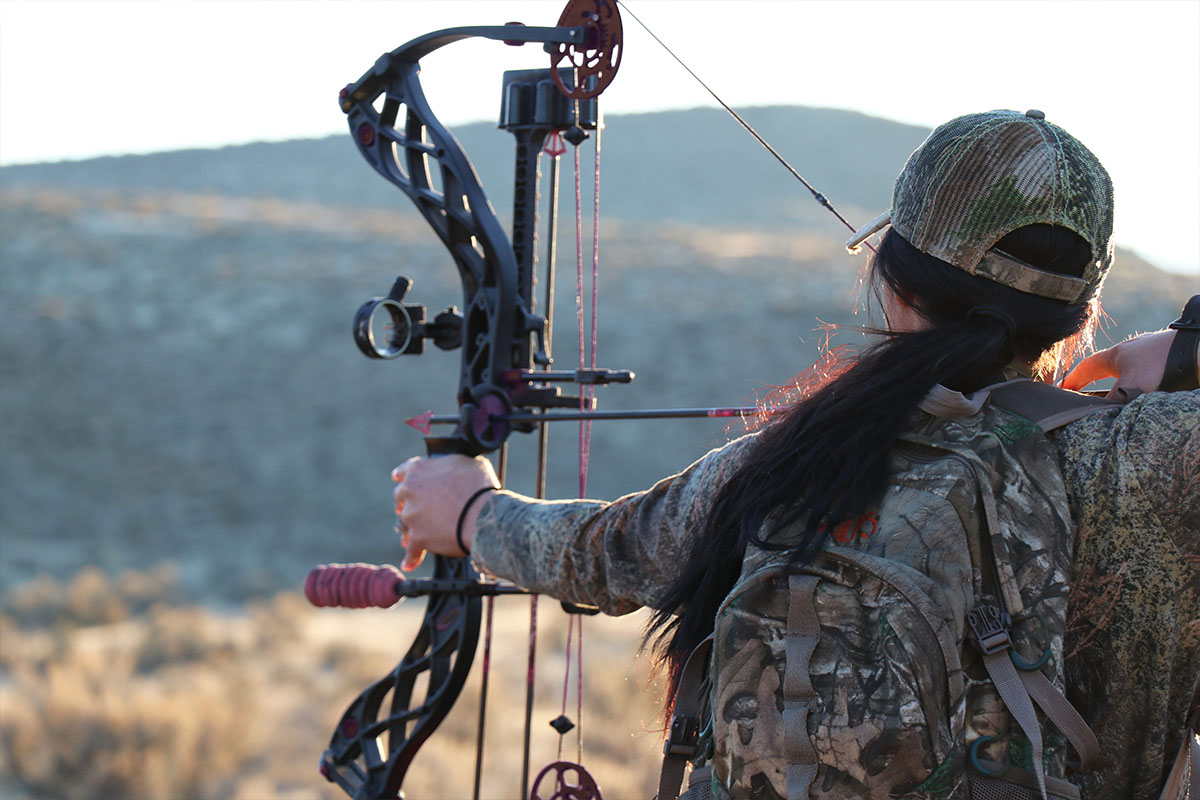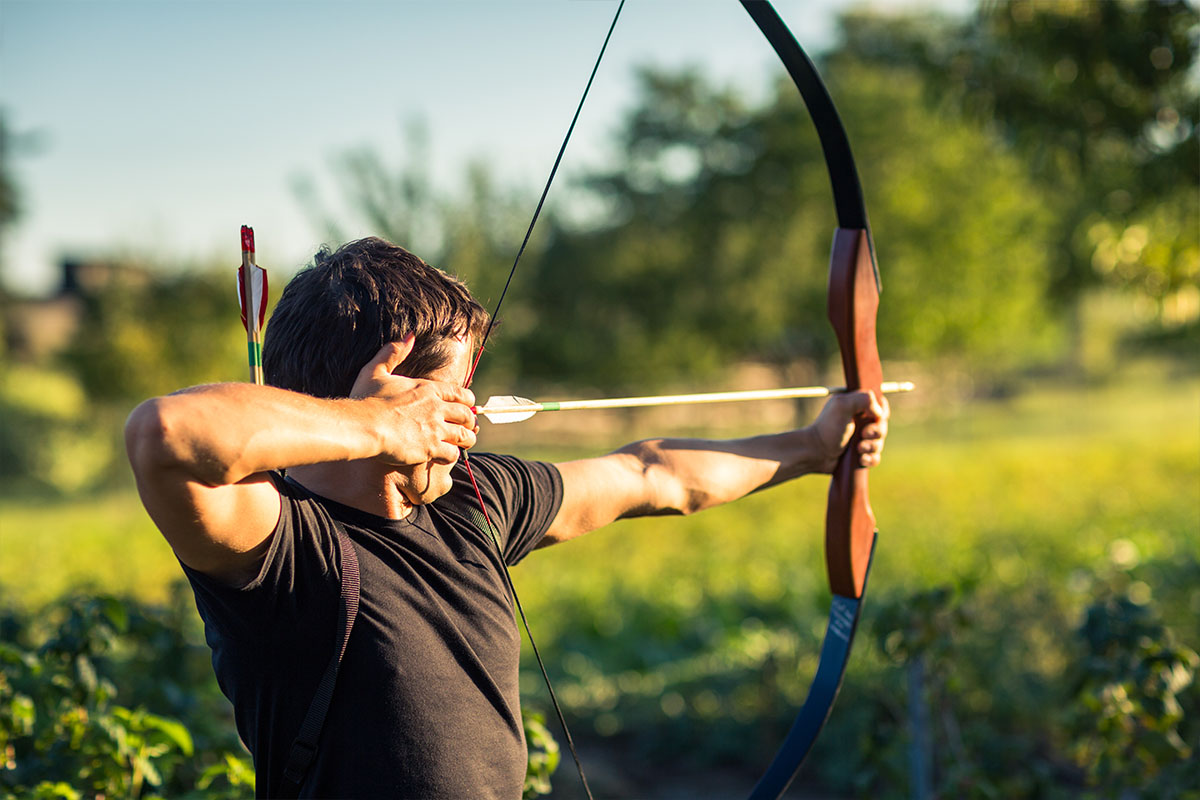Types of Archery Bows
By Larry McCoy |
Many bows have existed throughout the long history of the sport of archery. Advances in technology have helped create high-tech bows made from fiberglass and carbon fire, with impressive new shooting mechanisms and features.
Today, there are four main types of bows on the market. They each serve different purposes, and are used in specific types of archery. Here we’ll lay out the differences and advantages of recurve bows, compound bows, longbows, and crossbows.
| Type of Bow | Construction Materials | Uses |
|---|---|---|
| Recurve | Fiberglass, carbon, or wood | Hunting, competition, recreation, target shooting |
| Compound | Fiberglass, carbon | Hunting, target shooting |
| Longbow | Wood, synthetic | Nature shooting, historical archery |
| Crossbow | Steel or aluminum composites | Hunting (check regulations) |
Recurve Bow

Recurve bows are named for their shape: the central parts of the bow’s limbs curve toward the archer, while the ends of the bow curve away. This helps the archer shoot with more power while requiring less strength, as the design stores more energy.
Recurve bows are useful for beginning and expert archers alike. Because they are less difficult to operate, they are often used to teach beginners, but you can also spot modern recurve bows in Olympic archery events.
Most recurve bows can be easily deconstructed, so they are easy to pack and carry. They can also support sights, pressure buttons, and other accessories. The accessories are often not built in, so archers can still opt for the simplicity of the longbow if they prefer.
Recurve bows can be used for 3D, target, indoor, and field archery. These bows are very popular, so they can be easy to find to buy or rent at archery and sporting goods stores.
| Pros | Cons |
|---|---|
|
|
Compound Bow

A compound bow uses a system of cables, pulleys, and cams that help relieve a heavy draw weight for the archer. They still require strength to pull, but the archer can hold the draw for longer as the pulley system kicks in. This helps the archer take aim without becoming exhausted. Most compound bows are difficult to draw until their “valley,” where 60-90% of the weight drops off, making it easy for the archer to hold while aiming.
Compound bows are comprised of:
- Riser. The main part of the bow holds its many accessories. Usually carbon fiber or aluminum.
- Bowstring. The actual string of the bow has a more complex pulley system using a compound bow.
- Limbs. These store the energy during the draw.
- Cams. Cams rotate during the draw, putting pressure on the limbs.
- Cables. The string and cable assembly coordinate between all the component parts of the compound bow to distribute energy.
Compound bows are a modern invention, and they are almost entirely constructed of man-made materials. This makes them less susceptible to weather and moisture, which can warp wooden bows. They’ve only been around since 1966, which is far more recent than the traditional longbow.
Compound bows offer excellent accuracy, distance, and velocity. However, they are more complex and difficult to understand. This makes them a better fit for intermediate and experienced archers.
| Pros | Cons |
|---|---|
|
|
Longbows

Longbows (also referred to as Traditional Bows) are the Robin Hood-style bows you might initially picture when you think of archery. These bows reigned on the medieval battlefield, and were primary used from the 14th to 16th century.
These bows are a simple, curved piece of wood with string tied to each end. They do not have arrow rests or sights, making them more difficult to aim. They are also less powerful than compound or recurve bows, though technological advances have made them more accurate over time.
Unlike compound or recurve bows, longbows do not have specific draw weights or lengths. The draw weight of a longbow depends on how far back the archer draws it. A longbow should typically be the same height as the archer.
You might consider a longbow if you want to practice the historic tradition of archery, or if you are an expert archer looking to master this very simple but very difficult bow. Historically, the string was made from rawhide, sinew, or plant fiber, and was fit with a knot on each end of the bow. Now, longbows are usually made from synthetic or laminated wood layers
| Pros | Cons |
|---|---|
|
|
Crossbows

Crossbows were likely invented in China as early as 600 BC, and served as a common battle weapon. They are best for close quarters, and often have a heavier draw weight than compound or recurve bows.
We can think of crossbows as a compound bow turned on its side. Crossbows have a stock that resembles a rifle stock, and they use a trigger instead of a traditional draw. Archers use a cocking system to pull and lock the string, and then trigger to fire. The heavier draw weight works with crossbows because archers don’t have to hold the string in position.
| Pros | Cons |
|---|---|
|
|